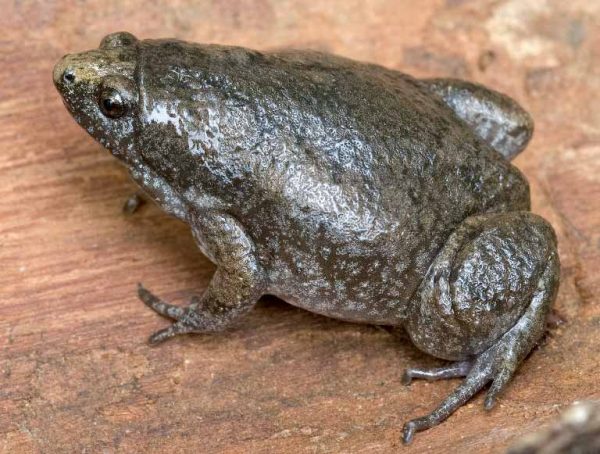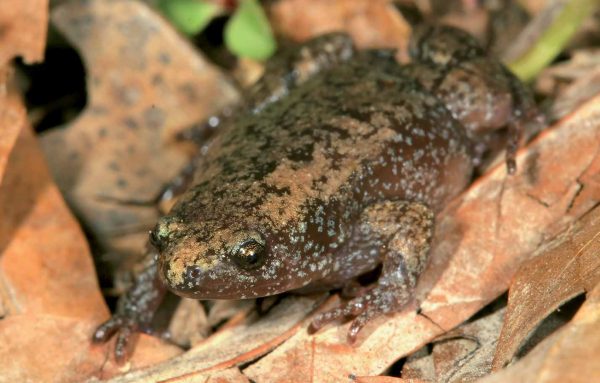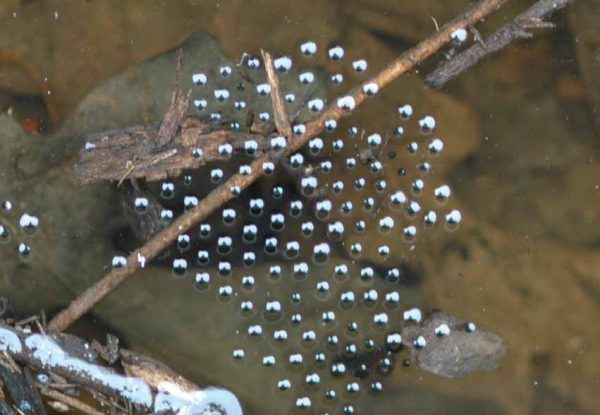
Eastern Narrow Mouthed Toad © John White
The Eastern Narrow-mouthed Toad, Gastrophyne carolinensis, is not actually a “True” Toad, but instead belongs to family Microhylidae, the Narrow-mouthed Toad family. This is the only species of Microhylidae living in the Commonwealth. It is most commonly found in the southern coastal plain and southern eastern shore, but may also be found in the southern Piedmont and the extreme southwestern counties.

Eastern Narrow-Mouthed toad © Bill Peterman
The Eastern Narrow-mouthed Toad is a small frog of 1 – 1-½ inches in length. It has a flattened body, a small pointy head, small eyes, and a fold of skin stretching across its heads, just behind its eyes. These frogs vary in color from gray to reddish and their backs are dusky-looking with tiny light blue spots and speckled throats. Their bellies are a dusky bluish-white. It’s possible for these colorations to change depending on the color of the frog’s environment, sort of like a chameleon. Narrow-mouthed Toads don’t have parotoid glands or warts, which are found on “True” Toads, nor do they have webbed feet, which are found on the hind feet of “True” Frogs.

Virginia range of the Eastern Narrow-mouthed Toad.
Narrow-mouthed Toads live a secretive life. They spend much of their time underground in burrows, but it is possible to find them in woodlands by carefully overturning logs, rocks, and cover boards. They can be found in pine flatwoods, pine woods, bottomland hardwoods, and cypress swamps. While their diet includes a variety of invertebrates, they are especially known to eat ants and termites. Breeding occurs from May – September in roadside ditches, flooded farm fields, interdunal swales, sinkhole ponds, pine and hardwood forests and wet grassy areas. Females lay eggs in packets, typically containing around 850 eggs. Their tadpoles metamorphose in 20-70 days.

Eastern narrow mouthed toad eggs © J.D. Kleopfer
The abrasive call of the Eastern Narrow-mouthed Toad, “beeeeeeeeeee,” sounds like the bleat of a lamb or like an electric buzzer. It may be confused with the call of the Fowler’s Toad.
Call of the Eastern Narrow-mouthed Toad:
Be careful if you handle this species. Rubbing or touching your eyes after touching this frog may result in a mild eye irritation.


